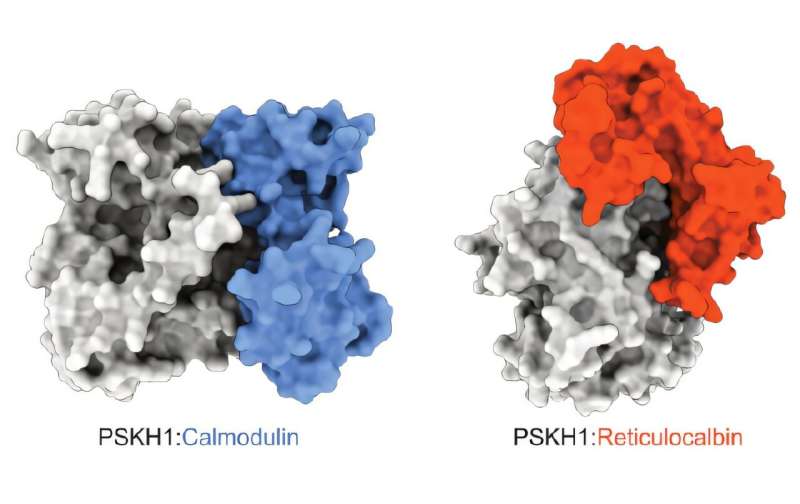This article has been reviewed according to Science X's editorial process and policies. Editors have highlighted the following attributes while ensuring the content's credibility:
fact-checked
peer-reviewed publication
trusted source
proofread
Scientists uncover method to halt key driver of prostate and other cancers

Melbourne-based scientists have, for the first time, discovered how to "switch off" a molecule which is one of the top culprits behind prostate cancer, and is also linked to lung and kidney cancers.
The "dark molecule"—meaning it's understudied—is known as "Protein Serine Kinase H1" (PSKH1) and is associated with tumor progression and metastasis. However, until now, how it does this has been unknown.
In this study, published in the Proceedings of the National Academy of Sciences and led by the Monash Institute of Pharmaceutical Sciences (MIPS) and WEHI, the team uncovered the way in which PSKH1 is activated (or "switched on") and, importantly, how it is switched off.
In the case of PSKH1, which is a "signaling molecule," the researchers found that when it binds to a protein called Calmodulin PSKH1 is "switched on" and when it binds to a protein called Reticulocalbin it is "switched off."
Joint senior author, Dr. John Scott from MIPS, describes this signaling activity as "a balancing act within our cells."
"Tumors form because cells ignore normal signals that tell them it's time to stop growing, or that it's time to die. When a signaling molecule, such as PSKH1, interacts with certain proteins on a cell surface, this binding triggers a chain of events that can amplify the cell activity and lead to the formation of tumors," Dr. Scott said.
"Now that we know more about the proteins driving the 'on' and 'off' status of PSKH1, we can start to develop new drugs that target this molecule and, ultimately, improve therapies for prostate and other cancers."

In 2024, prostate cancer was estimated to be the most commonly diagnosed cancer for males and for Australia overall. Treatments such as hormone therapy and chemotherapy can be effective, yet the side effects can be debilitating.
Joint senior author, Professor James Murphy from WEHI, said the team's goal is to harness this new information to develop better, more targeted therapeutic approaches.
"Switching off PSKH1 essentially means being able to stop the progression of implicated cancers in their track, and thereby this new information opens up a whole new world of potential when it comes to developing new drugs," Professor Murphy said.
"From here, our goal is to explore how we can start to develop new effective therapies, with fewer side effects."
Excitingly, understanding the mechanisms of how to switch PSKH1 on and off can also be applied to other molecules within the same family, broadening the potential of the study's findings to other cancers and diseases.
More information: Christopher R. Horne et al, PSKH1 kinase activity is differentially modulated via allosteric binding of Ca2+ sensor proteins, Proceedings of the National Academy of Sciences (2025). DOI: 10.1073/pnas.2420961122




















